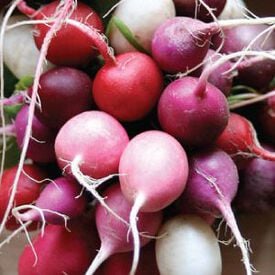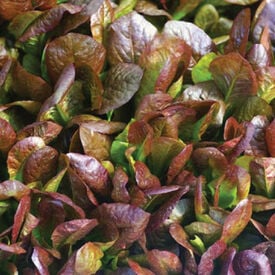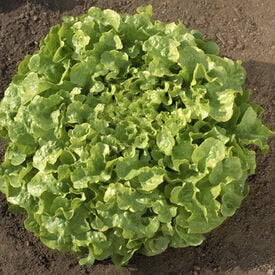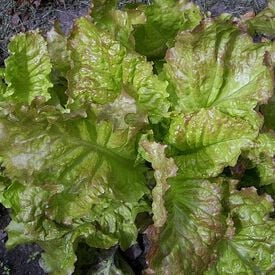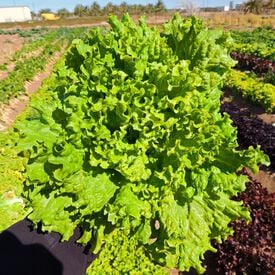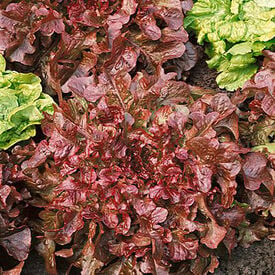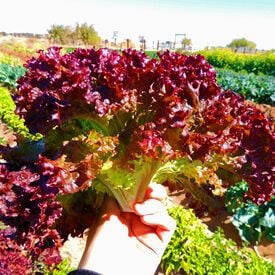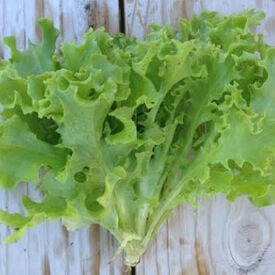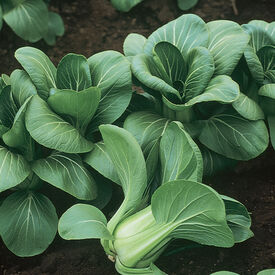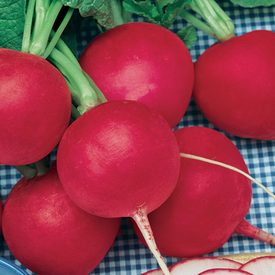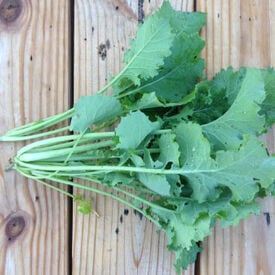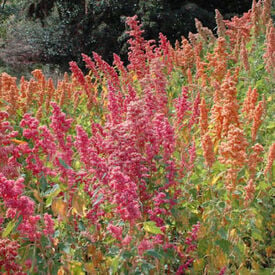Nothing says "spring" like the crisp taste of a homegrown Easter Egg Radish! This variety is a bright color blend of red, white, rose pink, purple, and bi-color (red top, white bottom) that is perfect for salads and relish trays. At the harvest time, you can have your own "Easter Egg hunt" for the most colorful radish! After the harvest, you can eat them fresh in salads or slice and add them to sandwiches for a bit of crunch and color.
The Cimarron is a very beautifully colored romaine lettuce! This tasty lettuce has bright green-red leaves that fade to deep red tips. This romaine type lettuce has good disease and bolt resistance. Cimarron is a favorite among gardeners for its beautiful hue and crispy texture in salad mixes!
The Oakleaf Lettuce gets its name for having very tender leaves that resemble the white oak leaf. This variety is an old time favorite that tastes great in mixed salads. The Oakleaf is perfect for planting late in the season. This lettuce will stay tasty and non-bitter well into the heat of summer!
The Prizehead Lettuce produces luscious slow bolting heads of loose, large green leaves with curled maroon tips. This variety is a popular lettuce for both home gardens and markets. Prizehead is truly a prize for its flavor being great in salads and sandwiches.
The Waldmans Green Lettuce is the standard green leaf lettuce that is most widely grown for commercial. This variety is a highly productive lettuce that produces large, dark green leaves with slightly savoyed, wavy texture form loose, open heads.
The Red Salad Bowl is a very popular loose-leaf heirloom lettuce that is heat resistant. This variety is an appealing, slow bolting deep red leaf lettuce with finely divided leaves. The Red Salad Bowl has a sweet and tender flavor and is a colorful delight for many dishes and salads! This variety is a favorite for being quick grow and great for cut and come again harvesting.
The Selway is a Lolla Rossa type lettuce with beautiful light green and dark purple coloring. This variety has deeply curled loose leaves with frilled dark-purple edges edges. The Selway is an essential in salad mixes for its color and taste. For baby leaf production, this variety can be harvested in 30 days and for full sized leaves, it can be harvested in 55 days and can be cut repeatedly!
Tango Lettuce is a fun curled baby leaf lettuce variety! This lettuce has a crisp clean texture and holds up well with numerous salad dressings. This attractive uniform plant forms tight erect rosettes that are 12" across and 6-8" tall. Tango is an oak leaf variety.
Mei Qing Choi cabbage is a Shanghai pak choi type with good heat and cold tolerance and bolting resistance. In the U.S., this variety is harvested as baby pak choi. It is smaller than Joi Choi, weighing about a quarter of a pound. This pak choi has an excellent flavor and is extra tender.
A 1918 The Great Northern Seed Company says this variety is not withstanding its immense size. This variety does not get hollow or pithy and its flesh remains sparkling white, solid, crisp and juicy. This slower bolting variety has the mildest flavor with a tender, crunchy texture.
The Dwarf Siberian Kale leaves are perfect as a garnish and in hearty winter dishes. This frilly green and purple kale dances in the crisp early morning cold and thrive. Why? Because its roots are from Russia!
The Brilliant Rainbow Quinoa blends beautifully into meals or salads. Just like its name, this quinoa contains a spectrum of many different colored heads - red, orange, gold, white, and green. The Brilliant Rainbow Quinoa's leaves have a salty spinach-like flavor. Harvest for greens when 6-8" tall or let grow for beautiful tall blooms that can be harvested for grain. This Quinoa's grain has a nutty flavor that goes well with any dish!
